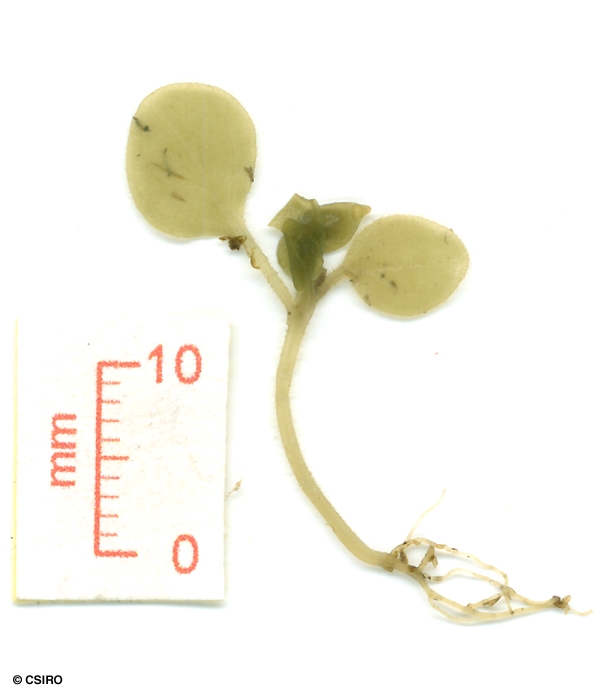Australian Tropical Rainforest Plants - Online edition
Solanum mauritianum Scop.





Scopoli, J.A. (1788) Deliciae Florae et Faunae Insubricae 3 3: 16. Type: Cult. seed from Mauritius; holo: G. [Fide K. E. Roe, Brittonia 24: 254 (1972).].
Nightshade; Wild Tobacco; Wild Tobacco Tree; Wild Tobacco Bush; Tobacco, Wild
Seldom exceeding 30 cm dbh.
Inflorescences many flowered, pedicels about 2-3 mm long. Calyx about 5 mm long, lobes about 2 mm long, stellate hairy on the outer surface. Corolla about 15-25 mm diam., tube about 2-3 mm long, lobes about 7-8 mm long. Anthers about 2-3 mm long, filaments about 1-2 mm long. Ovary densely pubescent, style about 5-7 mm long.
Calyx stellate hairy, persistent on the fruits. Fruits globular, about 10-15 mm diam. Seeds about 150-250 per fruit, seeds somewhat flattened, about 1.5-2 mm wide. Testa finely reticulate.
Cotyledons ovate, about 6-10 mm long with a few scale-like hairs on the upper surface. First pair of leaves broadly elliptic, about 15-25 x 11-18 mm. Petiole about 8-20 mm long. At the tenth leaf stage: leaf blade broadly ovate, apex acute to acuminate, base attenuate, upper surface clothed in pale, stellate hairs, undersurface densely so; petiole, stem and terminal bud densely clothed in pale, stellate hairs. Seed germination time 14 to 18 days.
Suspected of being poisonous to stock but the evidence is not conclusive. Everist (1974).
The ripe fruit of this species is much appreciated by the Brown Pigeon (Cuckoo Dove) and they can be found in these plants each afternoon by people interested in such aggregations. These birds are widely believed to spread this alien species but there are probably other vectors as well. This is now a characteristic regrowth species in disturbed rain forest areas of North Queensland.
The 'dust' produced by the leaves can be rather irritating to people required to work in close proximity and disturb this species by cutting or otherwise disturbing it.
Fruit eaten by King Parrots and Pigeons. Cooper & Cooper (1994).
This species is a rich source of solasodine which is a possible starting point for the manufacture of steroids.
It may have medicinal properties.





